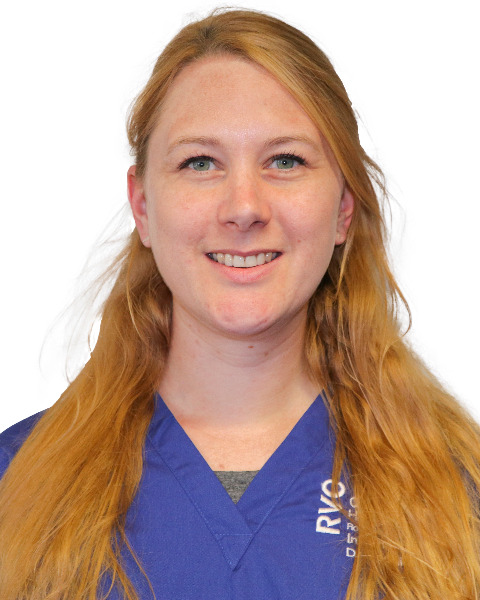Small Animal Internal Medicine
EN06 - A Comparison of Biochemical Findings in Cats with Diabetes Mellitus Between Different Body Condition Categories
Thursday, June 15, 2023
11:30 AM - 11:45 AM ET
Location: PCC 106AB
CE: 0.25

Sophie E. Broughton, BSc, BVSc, MVetMed, DACVIM (SAIM), MRCVS (she/her/hers)
Staff Clinician in Small Animal Internal Medicine
Royal Veterinary College
Hatfield, England, United Kingdom
Research Abstract - Oral Presenter(s)
Abstract: Background: Obesity is a risk factor for type 2-like diabetes mellitus (DM) in cats, but DM also occurs in non-obese cats. It is unknown if DM in non-obese cats is biochemically distinct from obesity-associated DM.
Hypothesis/Objectives: Evaluation of data from cats with DM will reveal biochemical differences associated with body condition.
Animals: Cats diagnosed with type 2-like DM excluding those with insulin-like growth factor (IGF-1)>1000ng/ml, at first presentation to a single feline referral DM clinic between December 2013 and December 2022 (n=111).
Methods: Retrospective cohort study. Signalment, anamnesis and biochemical values were statistically compared (parametric: one-way ANOVA; non-parametric: Kruskal-Wallis) among cats classified into the following body condition score (BCS) categories: underweight (1-3), normal (4-5), overweight (6-7), obese (8-9).
Results: BCS of 111 cats were classified as underweight (n=17), normal (n=24), overweight (n=52), obese (n=18). Sex (p=0.54), age at diagnosis (p=0.358), and insulin dose (total dose p=0.37, units/kg p=0.34) did not differ among groups. Underweight cats had a shorter median(range) duration of insulin treatment (days) [45(12-116)] than obese cats [129(29-768)](p=0.018). Mean(±SD) fructosamine was greater in underweight (533.82±103.28mmol/l) than overweight (436.25±124.81mmol/l; p=0.022), and nearing significance in obese cats (428.18± 97mmol/l; p=0.051). Median(range) total T4 was significantly lower in non-overweight (16.6(5.8-31.5nmol/l)) than in overweight and obese cats (20.3(5.7-47.4nmol/l); p=0.004). Median(range) IGF-1 was lower in underweight (296(171-489)ng/ml) than overweight (481(95-985)ng/ml; p=0.004) and obese (572(196-902)ng/ml; p=0.002) cats.
Conclusions and clinical importance: Underweight cats had biochemical changes consistent with poorer diabetic control. Variation in IGF-1 by body condition has not been reported in non-diabetic cats.
Hypothesis/Objectives: Evaluation of data from cats with DM will reveal biochemical differences associated with body condition.
Animals: Cats diagnosed with type 2-like DM excluding those with insulin-like growth factor (IGF-1)>1000ng/ml, at first presentation to a single feline referral DM clinic between December 2013 and December 2022 (n=111).
Methods: Retrospective cohort study. Signalment, anamnesis and biochemical values were statistically compared (parametric: one-way ANOVA; non-parametric: Kruskal-Wallis) among cats classified into the following body condition score (BCS) categories: underweight (1-3), normal (4-5), overweight (6-7), obese (8-9).
Results: BCS of 111 cats were classified as underweight (n=17), normal (n=24), overweight (n=52), obese (n=18). Sex (p=0.54), age at diagnosis (p=0.358), and insulin dose (total dose p=0.37, units/kg p=0.34) did not differ among groups. Underweight cats had a shorter median(range) duration of insulin treatment (days) [45(12-116)] than obese cats [129(29-768)](p=0.018). Mean(±SD) fructosamine was greater in underweight (533.82±103.28mmol/l) than overweight (436.25±124.81mmol/l; p=0.022), and nearing significance in obese cats (428.18± 97mmol/l; p=0.051). Median(range) total T4 was significantly lower in non-overweight (16.6(5.8-31.5nmol/l)) than in overweight and obese cats (20.3(5.7-47.4nmol/l); p=0.004). Median(range) IGF-1 was lower in underweight (296(171-489)ng/ml) than overweight (481(95-985)ng/ml; p=0.004) and obese (572(196-902)ng/ml; p=0.002) cats.
Conclusions and clinical importance: Underweight cats had biochemical changes consistent with poorer diabetic control. Variation in IGF-1 by body condition has not been reported in non-diabetic cats.

